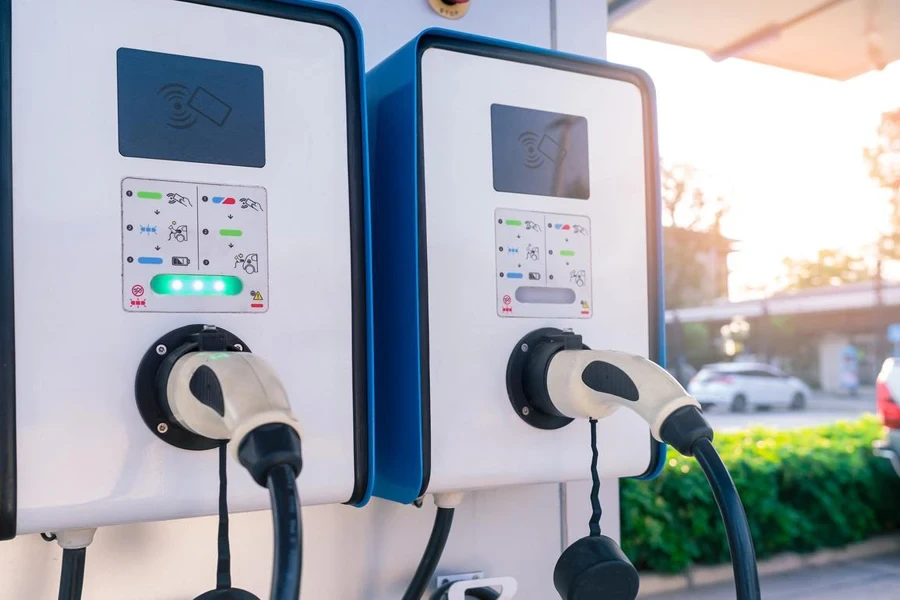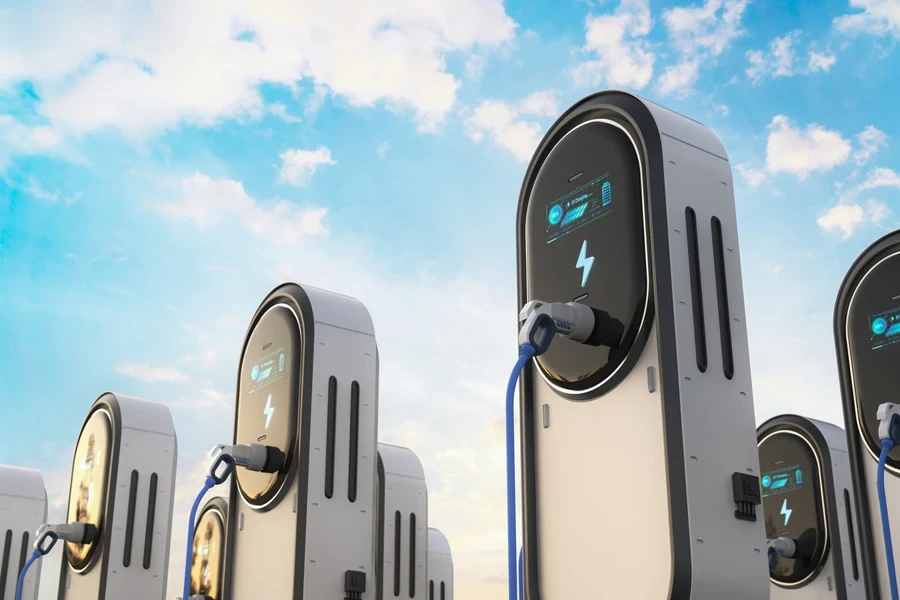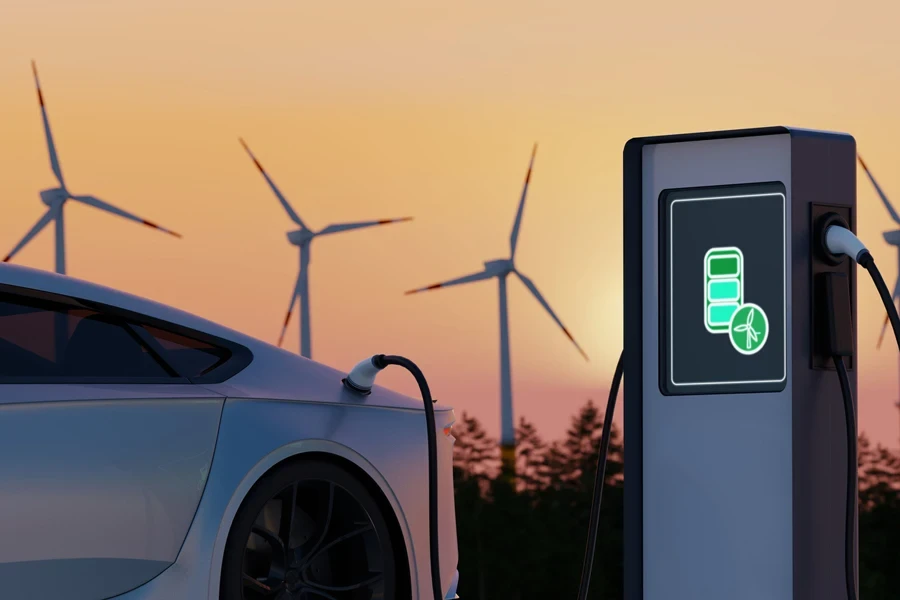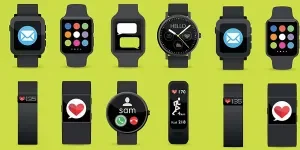In an era where technology continually reshapes how businesses operate and consumers interact, charging and power stations have emerged as pivotal elements in maintaining connectivity and productivity. These devices provide a reliable power source for a myriad of electronic devices, from mobile phones and laptops to more demanding equipment used in remote work settings and outdoor activities. Their versatility in application and capacity to support operations in areas without traditional power sources make them invaluable assets in a company’s operational toolkit, enhancing both mobility and efficiency in various professional contexts.
Table of Contents
1. Unpacking the spectrum of charging and power stations
2. Current trends shaping the power station market
3. Decisive factors for selecting superior charging stations
4. Spotlight on 2024’s premier charging and power stations
5. Conclusion
Unpacking the spectrum of charging and power stations
Exploration of power station categories
Charging and power stations, essential in today’s market, are categorized mainly by their capacity and intended use, accommodating a broad spectrum of professional needs. From compact, lightweight models designed for mobile professionals to robust, high-capacity units crafted for industrial applications, each category serves distinct purposes. The smaller units typically offer portability and convenience for on-the-go charging of devices like smartphones and tablets, crucial for professionals in fields requiring mobility and constant connectivity. On the other hand, larger stations provide substantial power, capable of running critical equipment in remote locations or during extended power outages, supporting sectors such as construction and outdoor event management.

Utilization scenarios across different environments
The application of these power stations spans various environments, each presenting unique challenges and requirements. In corporate settings, portable power stations ensure uninterrupted operation of laptops and communication devices, facilitating seamless business operations during power fluctuations. For field operations, such as geological surveys or temporary research bases, the larger, more durable power stations are indispensable. They provide reliable power for essential equipment, often in harsh weather conditions, underscoring their adaptability and resilience. Furthermore, in the context of emergency management, these devices are critical, offering emergency responders and healthcare professionals the ability to maintain operational capacities without relying on local power grids.
This dual approach to understanding both the diverse types and their specific applications helps in selecting the appropriate model that aligns with operational demands and environmental conditions, ensuring efficiency and reliability in professional setups. These insights are grounded in the latest technological trends and consumer preferences, reflecting the evolving landscape of mobile power solutions.
Current trends shaping the power station market
Innovations and shifts in the charging station sector
Recent developments in the charging and power station market are predominantly driven by technological advancements and an increasing demand for sustainability. The sector is witnessing a rapid influx of innovations such as solar integration and smart, connected features that enhance user interaction and energy efficiency. These advancements facilitate greater control over power usage and management, allowing for remote monitoring and adjustments via smartphone applications. Manufacturers are also focusing on integrating renewable energy sources, which not only cater to environmentally conscious consumers but also reduce dependency on non-renewable power supplies. This shift is particularly noticeable in the rise of solar-powered stations that offer greater flexibility and are becoming more cost-effective. Experts currently value the electric vehicle supply equipment (EVSE) market at approximately $7 billion and forecast significant growth, with projections reaching around $100 billion by 2040. They estimate this boost will occur at a compound annual growth rate (CAGR) of 15% from now until 2040, driven by increasing electric vehicle adoption and the expansion of charging infrastructure.
Consumer trends and advances in technology
The consumer base for portable power stations is expanding, influenced by the growing trend of outdoor recreational activities and the increasing need for reliable power sources in disaster-prone areas. Technology has advanced to meet these demands with lighter, more powerful units that provide extended runtimes and faster charging capabilities. Consumers are increasingly looking for products that offer a balance between portability and capacity, prompting manufacturers to develop compact models with high-density batteries. This trend is accompanied by a demand for durable and weather-resistant designs that can operate under various environmental conditions, ensuring that power needs are met even in challenging situations.
These trends underscore the dynamic nature of the power station market, reflecting both the evolving consumer preferences and the technological advancements that drive the sector forward. Companies are adapting to these changes by innovating and expanding their product lines to include features that enhance user experience and meet the growing demand for sustainable, reliable, and portable power solutions.

Decisive factors for selecting superior charging stations
Key considerations for power needs and mobility
When selecting superior charging stations, it’s crucial to evaluate the specific features that accommodate the power needs of various devices while ensuring ease of mobility. For instance, the energy capacity of a charging station, often rated in watt-hours (Wh), should match or exceed the demands of the devices it is intended to power. High-capacity stations that can handle several thousand watt-hours are essential for longer operations without frequent recharges, making them ideal for businesses that utilize heavy machinery or operate for extended periods without access to conventional power sources.
Analyzing battery longevity and charge cycles
Battery longevity and the number of charge cycles are pivotal in assessing the cost-effectiveness and reliability of a power station. Advanced lithium-ion batteries are commonly used due to their high energy density and efficiency. The durability of these batteries is often represented by the number of charge cycles they can sustain before their capacity falls below 80% of the original. High-quality power stations offer upwards of 500 to 1,000 charge cycles. Monitoring technologies integrated into power stations also help in managing battery health, significantly impacting longevity and performance over time.
Durability and suitability for varied climates
The durability of charging and power stations under various environmental conditions is a critical factor, especially for use in outdoor or rugged settings. High-grade materials that can withstand drops, dust, water exposure, and extreme temperatures are essential for reliability. For instance, stations with an IP rating of IP65 or higher provide dust and water resistance, crucial for outdoor events or construction sites. Thermal management systems within the power stations also ensure they operate efficiently across a wide range of temperatures, maintaining performance without overheating or freezing.
By considering these detailed features and functionalities, businesses can select charging stations that not only meet their immediate power needs but also offer the flexibility to adapt to changing technologies and energy requirements. This careful selection process ensures that investments in charging infrastructure are both effective and future-proof, aligning with the evolving needs of modern enterprises.

Spotlight on 2024’s Premier Charging and Power Stations
Detailed review of market leaders and their innovations
Here are detailed introductions to the first three portable power stations, highlighting the best options for 2024:
- EcoFlow River 2 Pro
- Capacity and Power: The EcoFlow River 2 Pro is equipped with a robust battery that provides 720Wh of energy storage, making it suitable for powering small to medium-sized devices for extended periods.
- Charging Options: It features multiple output options, including standard AC outlets, USB-A and USB-C ports, and a 12V car outlet, ensuring compatibility with a wide range of devices.
- Special Features: One of its standout features is the X-Boost technology, which enables it to power devices up to 1800 watts, surpassing the typical output limits of portable power stations of its size.
- Portability: Despite its substantial power capacity, the River 2 Pro remains highly portable due to its compact design and an integrated handle, making it easy to transport.
- Bluetti EB55
- Capacity and Power: The Bluetti EB55 offers a 537Wh lithium battery, making it a versatile choice for both outdoor activities and backup home power.
- Charging Options: It supports solar charging in addition to AC and car charging, providing flexibility in how it can be recharged, which is particularly valuable during extended power outages or off-grid adventures.
- Special Features: This model includes wireless charging pads on top, allowing for convenient charging of smartphones and other wireless-compatible devices without the clutter of cables.
- Design and Build: The EB55 is designed with durability in mind, featuring a sturdy build to withstand the rigors of outdoor use, and it includes an informative LED display that monitors power input and output.
- Goal Zero Yeti 500X
- Capacity and Power: With a 505Wh capacity, the Yeti 500X is capable of charging everything from smartphones to portable fridges, making it a reliable power source for camping trips and emergency backup.
- Charging Options: It offers varied outputs including AC, DC, USB-A, and USB-C, ensuring broad device compatibility.
- Special Features: The Yeti 500X can be recharged via solar panels, wall outlet, or car charger, highlighting its versatility in energy replenishment.
- Eco-friendly Aspect: Goal Zero promotes environmentally conscious power solutions, and the Yeti 500X is part of this ethos, designed to offer a cleaner alternative to gasoline-powered generators.
Performance benchmarks and cost-effectiveness
When evaluating performance and cost-effectiveness, the Jackery 2000 Plus provides an impressive balance. It delivers a robust 2,048Wh capacity that can be doubled or even tripled, thanks to its expansion capabilities. This makes it not only versatile but also a cost-effective choice for businesses needing portable power in varying scales.
Bluetti’s models, particularly the AC200 Max, also offer substantial value with their large storage capacities and expansion options. The initial investment in these units is offset by their durability, extensive feature sets, and the ability to scale up power needs without purchasing entirely new systems.

Expert insights on model specifications and usability
Experts praise the Jackery 2000 Plus for its user-friendly design, highlighting its integrated display that offers real-time insights into power usage and battery management. This is crucial for maintaining efficient operations and ensuring that the power supply matches the demand without any energy wastage.
Bluetti’s AC200 Max receives similar accolades for its usability, especially in terms of its environmental adaptability. With a rugged build and high ingress protection (IP) rating, it is designed to perform reliably in various climatic conditions, from dusty work sites to humid environments, making it an ideal choice for industries that operate in challenging outdoor conditions.
The portable power station market in 2024 continues to be led by innovative designs from established brands such as Jackery and Bluetti, which are pushing the boundaries of what portable power solutions can offer.
Conclusion
The selection of the right charging and power station is crucial for ensuring operational efficiency and sustainability in professional settings. As demonstrated by the market leaders in 2024, innovations in modularity, energy capacity, and solar integration not only cater to current power demands but also anticipate future energy needs. Such advancements empower businesses to maintain robust operations irrespective of location constraints, highlighting the strategic importance of investing in adaptable and scalable power solutions. These considerations are essential for businesses aiming to enhance operational capabilities while mitigating environmental impact.




